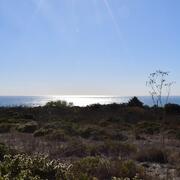Fish & Aquatic Species
Energy & Wildlife
Tools & Technology
Species Management Research Program
The Species Management Research Program provides science that is used by managers, policy makers, and others for decisions that protect, conserve, and enhance healthy fish and wildlife populations across the United States and beyond.
News
Drivers of Wetland Change: A Paleo Perspective
Drivers of Wetland Change: A Paleo Perspective
USGS Research: Elk Personality Affects Patterns of Conflict and Migration—Implications for Hunting and Disease
USGS Research: Elk Personality Affects Patterns of Conflict and Migration—Implications for Hunting and Disease
A new framework for guiding management decisions for amphibians in an uncertain future
A new framework for guiding management decisions for amphibians in an uncertain future
Publications
Reply to the discussion by Pilfold “Polar bear mass change confirms hyperphagia follows ringed seal whelping” Reply to the discussion by Pilfold “Polar bear mass change confirms hyperphagia follows ringed seal whelping”
The spring is a critical period when polar bears (Ursus maritimus Phipps, 1774) are thought to have peak access to seals and acquire the majority of their annual energy requirements during a period of hyperphagia. Pagano et al. (Pagano A.M., Atkinson S.N., and Archer L.C. 2025. Arctic Science.11:1-14. doi:10.1139/as-2024-0051) examined the intra-seasonal changes in body mass of 31 polar...
Amphibian diversity of the western Colorado canyonlands including potential threats from nonnative bullfrogs and disease Amphibian diversity of the western Colorado canyonlands including potential threats from nonnative bullfrogs and disease
Throughout the canyons of the Colorado and Uncompahgre Plateaus, water is a limited resource for wildlife, with patchy distribution and seasonal availability. Tributary creeks within these canyons drain into mainstem rivers, providing habitat and breeding sites for native amphibians. Yet, little is known about the diversity and distribution of amphibians that live in these harsh, dynamic
U.S. Geological Survey Pollinator Science Strategy, 2025–35—A Review and Look Forward U.S. Geological Survey Pollinator Science Strategy, 2025–35—A Review and Look Forward
This “U.S. Geological Survey Pollinator Science Strategy, 2025–35—A Review and Look Forward” (“Pollinator Science Strategy”) describes the science vision of the U.S. Geological Survey (USGS) to support management, conservation, and policy decisions on animal pollinators and their habitats. As the science arm of the Department of the Interior, the USGS has a primary role in providing...
By
Ecosystems Mission Area, Cooperative Research Units, Species Management Research Program, Eastern Ecological Science Center, Fort Collins Science Center, Great Lakes Science Center, Northern Prairie Wildlife Research Center, Northern Rocky Mountain Science Center, Upper Midwest Environmental Sciences Center, National Geospatial Technical Operations Center
Science
Shorebird Research
With its vast size and geographic position at the northern end of several migration pathways, Alaska is a critically important site for the world’s shorebirds. Thirty-seven shorebird species regularly breed in Alaska. Most of these species conduct epically long migrations to take advantage of Alaska’s abundant food resources and breeding habitat, making Alaska a global resource for shorebirds...
Where land meets sea: USGS science for resilient coastal habitats
USGS coastal science plays a critical role in supporting the effective, science-based management of coastal ecosystems, where the biodiversity of land and sea meet. It provides managers with the information they need to make sound decisions. Through cutting-edge research, predictive modeling, and decision-support tools, USGS empowers resource managers to make informed, science-based choices. From...
By
Core Science Systems Mission Area, Ecosystems Mission Area, Water Resources Mission Area, Cooperative Research Units, Ecosystems Land Change Science Program, Land Management Research Program, Science and Decisions Center, Species Management Research Program, California Water Science Center, Eastern Ecological Science Center, Forest and Rangeland Ecosystem Science Center, Lower Mississippi-Gulf Water Science Center, Pacific Coastal and Marine Science Center, Western Ecological Research Center (WERC), Western Fisheries Research Center, Western Geographic Science Center, Wetland and Aquatic Research Center
Hydro-Ecology of Arctic Thawing (HEAT): Ecology
Permafrost thaw is leading to a myriad of changes in physical and chemical conditions throughout the Arctic.






